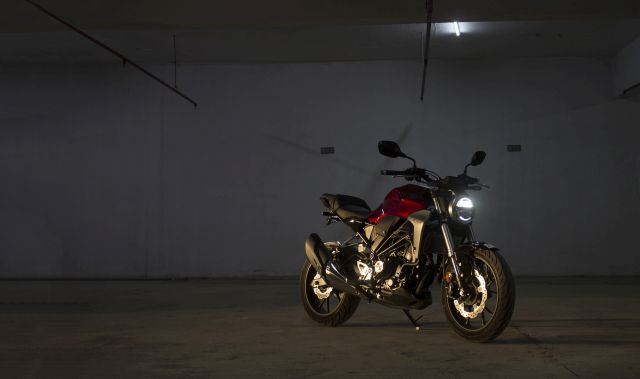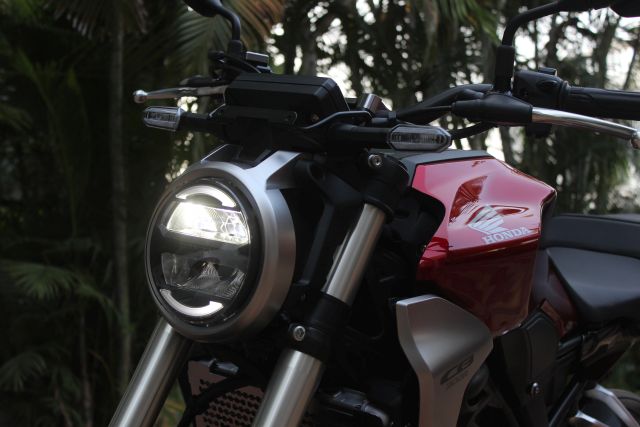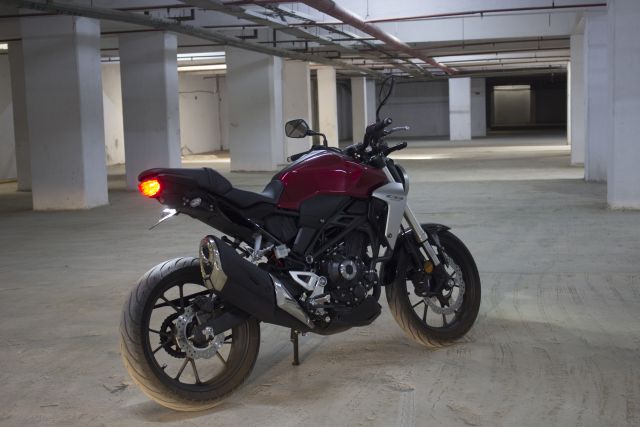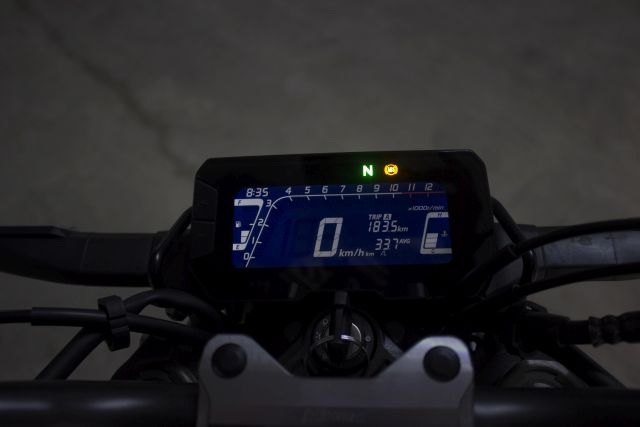
The Honda CB300R has been launched in India, and we spent a day with the smallest roadster in the Japanese manufacturers “Neo Retro Cafe” line up.
First spotted at EICMA 2017, the Honda CB300R takes its “Neo Retro” design cues from the big CB1000R roadster, and has been one of the top-selling entry-level roadsters in several markets since its international launch last year. Honda have now launched this bike here, priced at Rs 2.41-lakh (ex-showroom), and they haven’t given us a watered-down, India-specific version either; other manufacturers please take note. The CB300R sold here is identical to the international version, and comes fully equipped with a tough-looking 37-mm upside-down fork, petal discs gripped by Nissin calipers at both ends and IMU-dependent combined ABS.

Design & Style
Photographs are fine, but they don’t convey how compact and well-packaged the Honda CB300R really is. It is only in the flesh that you come to appreciate its approachable dimensions, while the excellent build quality and premium components are more than apparent. That round, dual-section LED headlight is similar to the one on the CB1000R and, flanked by those beefy fork legs, lends a muscular look to the front end. The tank is also shaped just like the one on the litre-class roadster, while the only plastic adornments are the grey shrouds on either side of the compact radiator, and a black belly that gels well with the overall design. Most of the visual mass is held towards the front of the motorcycle, while the sharp tail-section is devoid of any ornamentation and terminates in a minimalistic LED tail-lamp. The bike featured here has the rear end fender eliminator kit, bought separately from Honda, which neatens up the rear end considerably, and further enhances the svelte design. The stubby upswept exhaust is a little too bulky for my taste, but that’s the price you pay when adhering to today’s ever stricter emission norms, and Honda have done their best to help it fit in with the overall design flow, finished off in contrasting black and chrome.

The rider interface is a neat rectangular LCD with the inverted colour treatment for easy readability in bright sunlight, and includes a bar-type tachometer that arcs across the screen, large central speed readout, bar-type gauges for fuel level and coolant temperature, odo, trip meters and trip computer, clock, and a row of tell-tale lights, including a programmable shift light, along the top. Ultimately, the whole bike comes across as a very well-finished and sturdily built machine, as expected of a manufacturer like Honda.



Leave a Reply